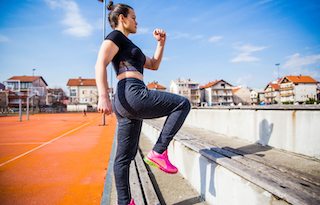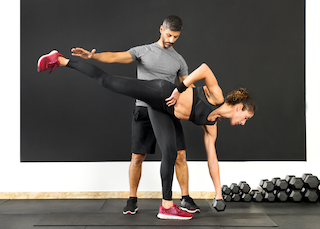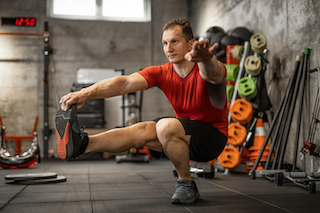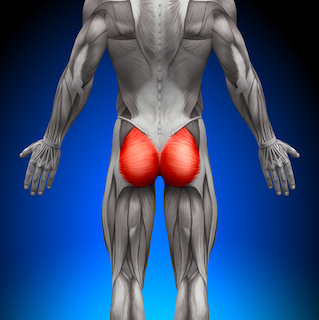Gluteus Maximus
Gluteus Maximus is the largest and heaviest muscle in the body. As a powerful extensor of the hip joint, the gluteus maximus suited to powerful lower limb movements, such as stepping onto a step, climbing or running, but is not used greatly during normal walking.
Gluteal muscle is an important muscle for lower extremity, and the weakness has been proposed to be associated with a number of lower limb injuries.
Gluteus Maximus
Anatomy
[Origin]
-
Ilium posterior to posterior gluteal line
-
Dorsal surface of sacrum and coccyx
-
Sacrotuberous ligament
[Insertion]
-
Most fibers end in iliotibial tract, which inserts into lateral condyle of tibia; some fibers insert on gluteal tuberosity
[Action]
-
Extends hip (especially from flexed position)
-
Assists in its lateral rotation
-
Steadies thigh and assists in rising from sitting position
Clinical Relevance
Trochanteric Bursitis
- Inflammation of the trochanteric bursa may result from repetitive actions such as climbing stairs while carrying heavy objects or running on a steeply elevated treadmill.
- These movements involved the gluteus max and move the superior tendinous fibers repeatedly back and forth over the bursae of the greater trochanter.
Ischial Bursitis
- Recurrent microtrauma resulting from repeated stress, from cycling, rowing, or other activities involving repetitive hip extension while seated, may overwhelm the ability of the ischial bursa to dissipate applied stress. The recurrent trauma results in inflammation of the bursa
- Ischial bursitis is a friction bursitis resulting from excessive friction between the ischial bursae and the ischial tuberosities. Localized pain occurs over the bursa, and the pain increases with movement of the gluteus max.
The Gluteus Maximus may not be weak, but just inhibited!?
Glutes maximus is one of phasic muscles that tends to be inhibited in our body by many causes:
- Arthrogenic inhibition from the hip joint
- Tight iliopsosas which sends a reciprocal inhibition to Glutes maximus as in Posterior lower crossed syndrome
- Pain reflex inhibition either hip pain or lumbopelvic pain
- Stretched weakness of Glutes maximus
- Sedentary life style and not doing sports since all the work will be done by hamstring as an Energy conservative mechanism of the body to save Glutes maximus for hard activities. So not doing sports won’t engage your Glutes maximus and increase it’s inhibition and making hamstring to take over it’s action and becomes synergistic dominant.
~ Evidence-Based Exercises ~
According to an EMG study, the exercises that demonstrated significant muscle contractions of Gluteus Maximus are;
- Forward Step-Up [Very High-Level Activation (> 60% MVIC)]
- Single-Leg Deadlift [High-Level Activation (41%-60% MVIC)]
- Single-Leg Squat [High-Level Activation (41%-60% MVIC)]
Forward Step-Up

Single-Leg Deadlift

Single-Leg Squat

< Reference >
- Keith L. Moore, Anne M. R. Agur, Arthur F. Dalley. Moore Clinically Oriented Anatomy 7th Edition, Lippincott Williams & Wilkins, 2013
- Reiman MP , Bolgla LA, Loudon JK. A literature review of studies evaluating gluteus maximus and gluteus medius activation during rehabilitation exercises.Physiotherapy Theory and Practice. 2012 :28(4): 257-268.
- Page .P, Frank C, Lardner R. Assessment and Treatment of Muscle Imbalance: The Janda Approach .Champaign . Human Kinetics. 2010
- Freeman S, Mascia A, McGill S. Arthrogenic neuromusculature inhibition: a foundational investigation of existence in the hip joint.Clinical Biomechanics .February 2013:28(2):171–177
- Josephine Key. A Movement Problem E-Book: A clinical approach incorporating relevant research and practice 1st Edition .Edinburgh .New York .Churchill Livingstone ELSEVIER.2010


